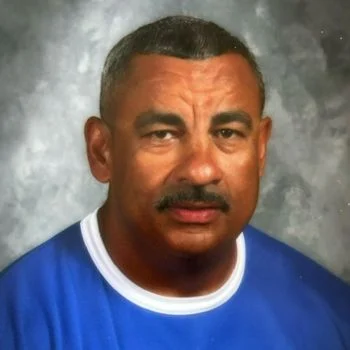Strength and conditioning and sports performance coaches earn a living by training their athletes generally with progressive overload, but some already-overloaded athletes need the recovery bucket filled more than they need more training stresses added. I have seen this problem occurring firsthand, training overworked athletes at the middle and high school levels, as well as in the private sector, and consulting with various high school teams that have overworked players and are looking for ways to improve their current strength and conditioning programs.
Some already-overloaded athletes need the recovery bucket filled more than they need more training stresses added, says @DrRaymondTucker. Share on XStress and Adaptation
Most strength and conditioning coaches have read either The Essentials of Strength Training and Conditioning by the National Strength and Conditioning Association or another strength and conditioning book that discusses the general adaption syndrome (GAS) model developed by Hans Selye in 1956. The explanation of general adaption syndrome says that any time the body experiences a novel or more intense stress than previously applied (e.g., lifting a heavier training load or a greater volume load), the initial response—or alarm phase—is an accumulation of fatigue, soreness, stiffness, or reduction in energetic stores that results in a reduction in performance capacity.1
There are two additional extensions to the general adaptation syndrome, and these are:
- The Stimulus Fatigue Recovery Adaptation theory states that the greater the overall magnitude of the workload encountered, the more fatigue accumulates and the longer the delay before complete recovery can occur.1
- The Fitness Fatigue Paradigm states that fatigue dissipates at a faster rate than fitness, thus allowing preparedness to become elevated if appropriate training strategies are used to retain fitness while reducing fatigue.1
If followed, the general adaption model is a simple prescription for developing strength and conditioning programs that can prevent overtraining, leading to decreased athletic performance and increased risk of injury.
Several years ago, Coach Michael Boyle, a leading expert and sought-after speaker in strength and conditioning, wrote an excellent article called “Abide by the Bucket Hierarchy.” Coach Brendon Rearick, one of the coaches at MBSC, discusses the idea of bucket filling in rules #44 and #45 in his book Coaching Rules. Coach Rearick states that he programs for what he considers to be the four buckets of strength and conditioning:
- Mobility
- Strength
- Power
- Conditioning
As a coach, Rearick aims to ensure each bucket is filled so his clients can reach their goals, and he doesn’t waste time filling already-filled buckets.2 The general adaptation syndrome and the bucket hierarchy both feature ways to prevent overtraining. As strength and conditioning coaches, are we applying what we have learned, or are we letting our egos get in the way of good training?
When Buckets Spill Over
The following scenario exemplifies what often occurs in the strength and conditioning profession. Let’s say we are currently training a multi-sport athlete at the high school level: their primary sport is football, and their secondary sport is basketball.
If this athlete is going to play football in the upcoming season, he will have to go through a mandatory off-season football strength and conditioning program during his athletic period at school that could last 75 minutes (depending on the school’s bell schedule), or he could be placed in an athletic period focusing on basketball that will go right into after-school basketball practice. Here in Texas, there is a strong emphasis on playing football, and to ensure multi-sport athletes participate in a football off-season conditioning program, some schools have early morning workouts before school.
Once school is out, the athlete rushes home for a quick bite and then goes to a sports performance center for additional weekly training. The parents believe hard work is the only way to achieve your goals and that more is better. However, reviewing the GAS model by Hans Selye, if the stressors are too high, performance can be further suppressed, and overtraining syndrome can result.1
Overtraining can be defined as excessive training frequency, volume, or intensity (or some combination of these) without sufficient rest, recovery, and nutrient intake, leading to conditions of extreme fatigue and/or illness.1 Accumulating this type of training over time will only reduce performance and potentially cause career-ending injuries.
In the article by Boyle (and his newly released book, Designing Strength Programs and Facilities 2nd edition), he explains the “filling bucket” philosophy to prevent overtraining. His advice is simple:
-
“I tell coaches to fill the empty buckets. Don’t fill a bucket that’s full. If a bucket is already full, don’t fill it. We want them to get stronger, but when we get greedy, we overflow their recovery capacity and create a mess.”3
In our hypothetical scenario, the athlete goes to a football off-season program, basketball practice, and a personal trainer and plays in two basketball games a week and maybe a weekend tournament. Based on the scenario, the athlete has already filled the buckets of strength, power, mobility, and conditioning during the football off-season program.
If the basketball program performs some basic bodyweight strength exercises, the strength bucket will be filled again; if they are working on plyometrics to improve vertical jumping or even the number of jumps performed during basketball practice, the power bucket will be filled. The football off-season program, basketball practice, and even the personal trainer could require the athlete to do some conditioning to get in shape, and now the conditioning bucket is filled. Several of these buckets could already be full and overflowing.
I want to add another bucket to the bucket hierarchy, the bucket of recovery, which appears empty in the above scenario. Designing a good strength and conditioning program is simple: coaches provide the right stimulus so athletes can respond and adapt. My recommendation for this athlete would be to focus only on basketball. There is no need to attend a football off-season program or even a personal trainer—if the athlete insists, then communication between all of the coaches needs to take place to provide the right stimulus to this athlete so he can properly adapt.
Stacking stressors in a ‘more is better’ mindset will only lead to performance decrement and injury, says @DrRaymondTucker. Share on XThe above example can be reflective of what occurs with any middle or high school athlete, regardless of whether they participate in many sports or a single sport. Stacking stressors in a “more is better” mindset will only lead to performance decrement and injury. I pose this question again: Are we improving athletic performance, or are we part of the overtraining problem in this profession? Are we helping these athletes, or are we so worried about keeping the lights on and building our business that we have forgotten why we are in the profession?
If you think about it, you will see that some coaches are contributing to the problem of overtraining our athletes because their egos are in the way. I do not think we will ever stop this from happening for various reasons, but we can at least make a conscious effort. It starts with communication to build trust between the parents, athletes, and coaches in different environments.
Coaches should take the time to educate the parents on what they are currently doing in their strength and conditioning programs. Coaches in the private sector, high schools, and the collegiate level should build a positive relationship with each other and discuss what they are doing with their athletes in their respective programs. Coaches could also exchange workouts with other coaches to ensure that they are not working on the same buckets during their training sessions—it should also be the responsibility of the athlete to take the time to communicate with the coach prior to the start of each session.
For example, if you are a high school strength and conditioning coach and know one of your athletes is going to a sports performance center for additional training, reach out to the coach at the facility to discuss what you are doing and have done in today’s workout. If you are a coach in the private sector and a high school or collegiate athlete comes to you for additional training, reach out to the coach to see what they are doing. Every strength and conditioning coach should ask three essential questions before developing their training program.
- Can you explain the reasoning behind what you are doing in your strength and conditioning program? If one of your athletes wants to know why they are performing a specific exercise or drill, can you explain it so they can understand its benefits?
- Will this program reduce the chance of injury and improve athletic performance or contribute to injuries and overtraining?
- Am I truly doing what is best for my athlete or what I like to do?
Performance Training for Performance Gains
In conclusion, strength and condition coaches need to understand that there will be some overlap that can be counterproductive, and you do not have total control of the athlete’s strength and conditioning program at the high school level. Coaches need to communicate, be flexible, and recognize how to adjust/adapt to the fact that their athletes will be exposed to stressors that are out of their control but which they have to account for nonetheless.
Coaches need to recognize how to adjust/adapt to the fact that their athletes will be exposed to stressors that are out of their control but which they have to account for nonetheless. Share on XThe strength and conditioning profession is filled with egos, and everyone thinks their program or the way of doing things is better than the next coach. In some cases, this is true, but let’s put our egos aside and learn to work together to ensure the athlete’s success. Isn’t this why we chose this profession in the first place? Our job as strength and conditioning professionals is to develop a program that reduces the chance of injury and enhances athletic performance.
References
1. Haff G. and Triplett T. (2000). Essentials of Strength Training and Conditioning (4th ed.). Human Kinetics.
2. Brendon R. (2020). Coaching Rules. Target Publications.
3. Michael B. (2023). Designing Strength Training Programs and Facilities (2nd ed). Target Publications.






